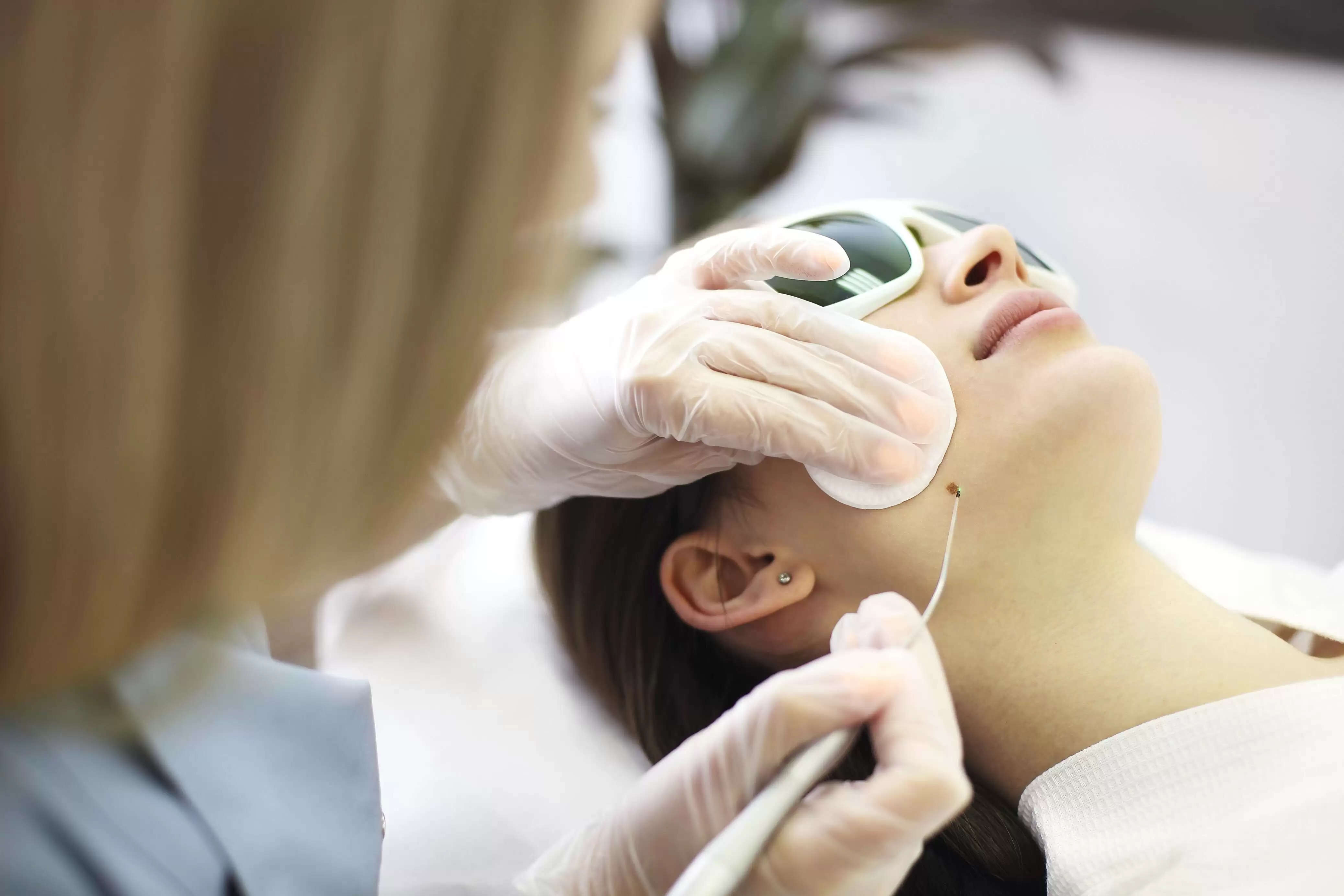Removing Moles Using Surgical CO2 Laser: Safe Way To Remove Unwanted Moles
Moles, which are dark blemishes on the skin, can cause self-consciousness, particularly if they are located on the face or other exposed areas of the body.

Although most moles are not harmful, some may develop into cancerous growths, causing concern. Fortunately, there are several non-invasive treatments available to eliminate unattractive moles. One of the most popular and effective treatments is the surgical CO2 laser treatment. Dr. Rinky Kapoor, a dermatologist in this article explains the procedure and advantages of using the surgical CO2 laser treatment to remove moles.
What is the C02 laser procedure?
The CO2 laser is an ablative laser that evaporates a very thin, precise layer on top of the mole when it comes into contact with the skin, without damaging the surrounding tissue. According to Dr. Rinky, the surgical CO2 laser is the most advanced mole removal procedure available today, as it damages the mole without causing much collateral damage to the surrounding skin.
The surgical CO2 laser treatment is a straightforward and efficient approach that facilitates speedy recovery, resulting in outstanding cosmetic outcomes for patients. Unlike conventional surgical methods, this procedure specifically targets the area that requires treatment, creating a smooth, uniform, and unblemished surface without any sutures or scarring. Dr. Rinky emphasises that this minimally invasive method reduces the risk of infection and scarring, and the treated area will form a scab that will naturally fall off.
“It is a minimally invasive procedure and it minimises the chances of infection and scarring,” says Dr. Rinky. As the wound heals, the mole is replaced with scar tissue, which may remain pink for a few weeks
It is crucial to keep in mind that suspicious moles should not be treated with CO2 lasers. Individuals with abnormal scars or darker skin tones should seek advice from experienced dermatologists when contemplating laser treatment. Moles that are unattractive, protruding, or cause friction with clothing are usually suitable for cosmetic removal. A consultation with a qualified dermatologist can assist in determining the ideal treatment plan for you.
Downtime and recovery:
The wound is expected to heal in around a week's time, depending on the size of the mole. During this time, Dr. Rinky advises keeping the treated area hydrated with ointments like Vaseline or Aquaphor, and antibiotics may be prescribed to prevent potential infection. It is also advised to avoid direct sunlight exposure during the recovery period.
Benefits:
Targets moles with ease and precision:
Surgical CO2 laser treatment targets the mole without damaging the surrounding skin. It focuses directly on the mole, allowing for more precise treatment. Additionally, this approach can help reduce the risk of damaging healthy skin or creating unnecessary scarring.
Causes no bleeding:
Bleeding is a common issue when treating moles. Moles have a rich blood supply, which means that they can bleed profusely when disturbed. However, surgical CO2 laser treatment is designed to avoid contact with blood vessels, which minimises or eliminates the bleeding altogether.
Safe and effective treatment:
According to Dr. Rinky, this treatment method is both safe and effective. This means that the treatment has been designed to minimise the risk of complications or side effects, while still achieving its intended purpose.
Conclusion:
The surgical CO2 laser treatment is a safe and effective way to remove unwanted moles. With its precision, minimal bleeding, and effectiveness, it is an excellent option for those who want to get rid of unsightly and unaesthetic moles. However, it is important to consult with an experienced dermatologist to determine the best treatment approach for your specific needs.
Disclaimer: The above content is for informational purposes only and should not be used as a substitute for the advice of a qualified physician or doctor. The Company does not vouch for or endorse any of the above content, and disclaims any and all warranties, express or implied, relating to the same..png)